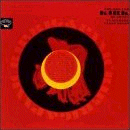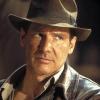Najviše volim klasične hard-bop ploče!
Now Playing:
Art Blakey - Caravan ( Riverside 23.10.1962. )

AMG Review by Lindsay Planer
By the time that jazz icon/bandleader/percussionist Art Blakey and his Jazz Messengers began recording for Riverside in the fall of 1962, Blakey had already been the spiritual center of the group for nearly 15 years. The unprecedented caliber of performers who had already passed through the revolving-door personnel reads like a who's who of 20th century jazz. On Caravan — his first of several notable sides for the venerable label — he is joined by a quintet of concurrent and future all-stars. Likewise, it could be argued that each has never again been presented in such a fresh or inspired setting as they are on these recordings. In order to establish with any authority just how heavy (even for purveyors of hard bop) the players in this band are, they need only to be named: Curtis Fuller (trombone), Freddie Hubbard (trumpet), Wayne Shorter (tenor sax), Cedar Walton (piano), and Reggie Workman (bass). With Blakey (drums) firmly at the helm, these Jazz Messengers deliver a scintillating synergy that doesn't sacrifice intensity for the sake of cadence. The trademark give and take that graces the laid-back and sophisticated pop and jazz standards "Skylark" and "In the Wee Small Hours of the Morning" likewise are responsible for the palpable energy brought to the sizeable contributions from Shorter and Hubbard — which make up half of the album's material. The title and leadoff track liquefies Duke Ellington's original arrangement and ignites it, fuelling this extended fiery interpretation. Hubbard's first solo harkens back to his own recording of "Caravan," which can be heard on the Impulse release Artistry of Freddie Hubbard and was recorded earlier the same year. Coincidentally, that disc also features Curtis Fuller as well as a rare non-Sun Ra-related appearance from John Gilmore (tenor sax). Blow for blow, however, this reading has more than just an edge — it possesses the entire blade. The melody snakes in and out of Blakey's strident flurry of syncopation. Another highlight is Shorter's interjectory solo, recalling his ability to succeed John Coltrane in Miles Davis' coterie. Among the original compositions, Shorter's upbeat "Sweet 'N' Sour" stands out as the most cohesive and ensemble-driven, although the singular group dynamic is well applied to the lively "This Is for Albert" as well. By contrast, Hubbard's "Thermo" is more angular — taking full advantage of the musicians' aggressive chops. The 2001 20-bit remaster from Fantasy contains two bonus tracks: take four of "Sweet 'N' Sour" and take two of "Thermo." This release can be considered definitive Blakey, bop, and the Jazz Messengers.

Art-ova AMG biografija
In the '60s, when John Coltrane and Ornette Coleman were defining the concept of a jazz avant-garde, few knowledgeable observers would have guessed that in another thirty years, the music's mainstream would virtually bypass their innovations, in favor of the hard bop style that free jazz had apparently supplanted. As it turned out, many listeners who had come to love jazz as a sophisticated manifestation of popular music were unable to accept the extreme esotericism of the avant-garde; their tastes were rooted in the core elements of "swing" and "blues," characteristics found in abundance in the music of the Jazz Messengers, the quintessential hard bop ensemble led by drummer Art Blakey. In the '60s,'70s, and '80s, when artists on the cutting edge were attempting to transform the music, Blakey continued to play in more or less the same bag he had since the '40s, when his cohorts included the likes of Charlie Parker, Miles Davis, and Fats Navarro. By the '80s, the evolving mainstream consensus had reached a point of overwhelming approval in regard to hard bop: this is what jazz is, and Art Blakey — as its longest-lived and most eloquent exponent — was its master.
The Jazz Messengers had always been an incubator for young talent. A list of the band's alumni is a who's-who of straight-ahead jazz from the '50s on — Lee Morgan, Wayne Shorter, Freddie Hubbard, Johnny Griffin, Jackie McLean, Donald Byrd, Bobby Timmons, Cedar Walton, Benny Golson, Joanne Brackeen, Billy Harper, Valery Ponomarev, Bill Pierce, Branford Marsalis, James Williams, Freddie Hubbard, Keith Jarrett and Chuck Mangione, to name several of the most well-known. In the '80s, precocious graduates of Blakey's School for Swing would continue to number among jazz's movers and shakers, foremost among them being trumpeter Wynton Marsalis. Marsalis became the most visible symbol of the '80s jazz mainstream; through him, Blakey's conservative ideals came to dominate the public's perception of the music. At the time of his death in 1990, the Messenger aesthetic dominated jazz, and Blakey himself had arguably become the most influential jazz musician of the past twenty years.
Blakey's first musical education came in the form of piano lessons; he was playing professionally as a seventh grader, leading his own commercial band. He switched to drums shortly thereafter, learning to play in the hard-swinging style of Chick Webb and Sid Catlett. In 1942, he played with pianist Mary Lou Williams in New York. He toured the South with Fletcher Henderson's band in '43-'44. From there, he briefly led a Boston-based big band before joining Billy Eckstine's new group, with which he would remain from 1944-47. Eckstine's big band was the famous "cradle of modern jazz," and included (at different times) such major figures of the forthcoming bebop revolution as Dizzy Gillespie, Miles Davis, and Charlie Parker. When Eckstine's group disbanded, Blakey started a rehearsal ensemble called the Seventeen Messengers. He also recorded with an octet, the first of his bands to be called the Jazz Messengers. In the early '50s, Blakey began an association with Horace Silver, a particularly like-minded pianist, with whom he recorded several times. In 1955, they formed a group with Hank Mobley and Kenny Dorham, calling themselves "Horace Silver and the Jazz Messengers." The Messengers typified the growing hard bop movement — hard, funky, and bluesy, the band emphasized the music's primal rhythmic and harmonic essence. A year later, Silver left the band, and Blakey became its leader. From that point, the Messengers were Blakey's primary vehicle, though he would continue to freelance in various contexts. Notable was a 1963 Impulse record date with McCoy Tyner, Sonny Stitt, and Art Davis; a 1971-72 world tour with "The Giants of Jazz," an all-star venture with Thelonious Monk, Dizzy Gillespie, Sonny Stitt, and Al McKibbon; and an epochal drum battle with Max Roach, Elvin Jones, and Buddy Rich at the 1964 Newport Jazz Festival. Blakey also frequently recorded as a sideman under the leadership of ex-Messengers.
Blakey's influence as a bandleader could not have been nearly so great had he not been such a skilled instrumentalist. No drummer ever drove a band harder; none could generate more sheer momentum in the course of a tune; and probably no drummer had a lower boiling point — Blakey started every performance full-bore and went from there. His accompaniment style was relentless, and woe to the young saxophonist who couldn't keep up, for Blakey would run him over like a fullback. Blakey differed from other bop drummers in that his style was almost wholly about the music's physical attributes. Where his contemporary Max Roach dealt extensively with the drummer's relationship to melody and timbre, for example, Blakey showed little interest in such matters. To him, jazz percussion wasn't about tone color; it was about rhythm — first, last, and in between. Blakey's drumset was the engine that propelled the music. To the extent that he exhibited little conceptual development over the course of his long career, either as a player or as a bandleader, Blakey was limited. He was no visionary by any means. But Art Blakey did one thing exceedingly well, and he did it with genius, spirit, and generosity until the very end of his life.
— Chris Kelsey
Edited by brisko, 08 January 2005 - 03:25.
























